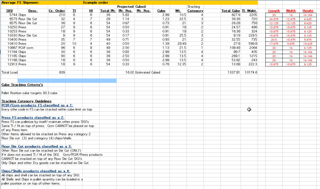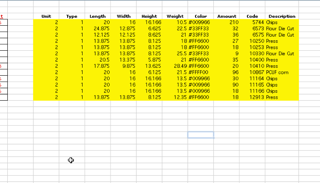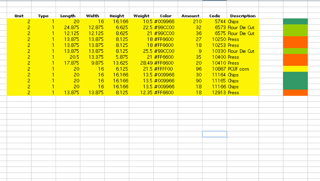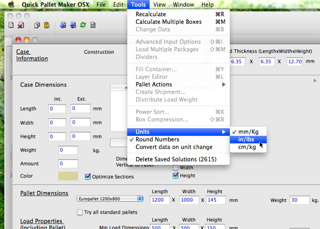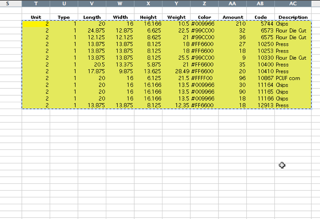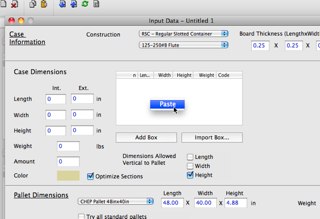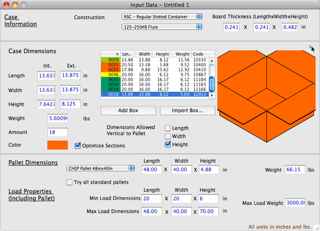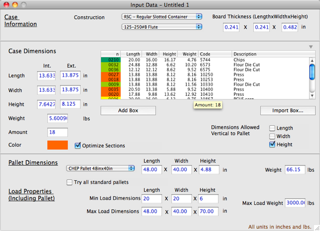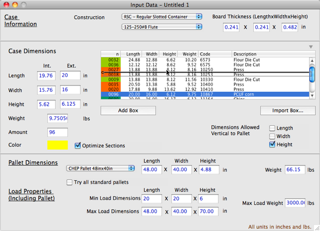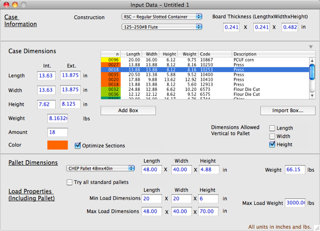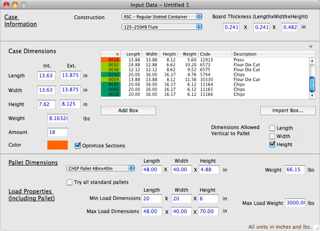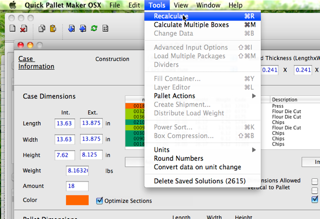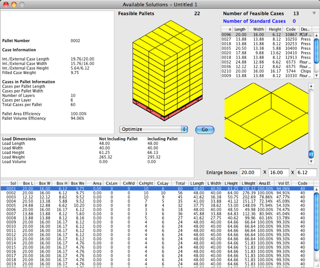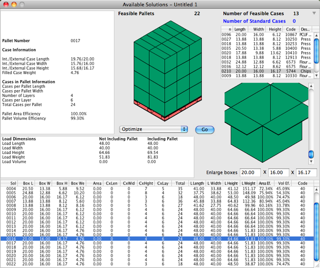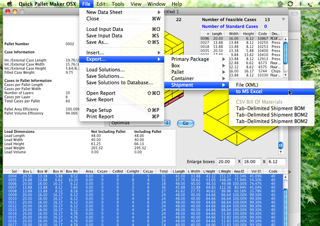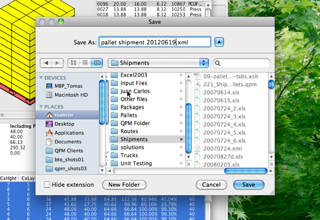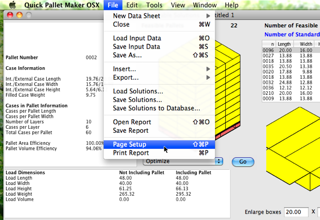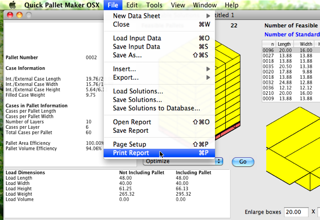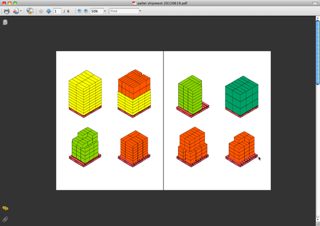RECTANGULAR PACKAGES IN TRAYS
QPM Version: 5.0.0 Beta
The purpose of this example is to show how Quick Pallet Maker 5.0 standalone can handle reordering of box classes in the Start from Box window with the purpose of prioritizing pallet loads.
The first step is to evaluate the information we have regarding the box shipment. For this, we use an ubiquitous spreadsheet in which we write down the information, including the details for each class. The first class is corn, which can be placed first on pallets and everything else stacked on top. There is also Ti/Hi information for this class (6x6 on a 48' pallet). The second to fourth classes contain similar constraints.
To use this data, we have to convert the rows and tables to a format Quick Pallet Maker can understand directly. The columns for this template are: Unit, Type, Length, Width, Height, Weight, Color, Amount, Code and Description. The screenshot below shows this arrangement.
Next, we need to create color codes for each one of the classes. These colors will allow us to resort them when working directly with Quick Pallet Maker. The corn products will be colored yellow, the press products orange, the flour light green and the chips will be dark green. A column in the spreadsheet has been added as a guide.
Now that we've set up the spreadsheet, we will run Quick Pallet Maker and open a new window starting from box dimensions. This is done by selecting File -> New Data Sheet -> Start From Box.
The Standard Cases and Pallets window should appear in the background and in the foreground, we should see the Start from Box window. The default units in QPM are mm/kg, which can be set in the Preferences/Settings window. For this example, we will change the units to inches/lbs through the command in the Tools menu, which does not make the setting permanent.
The next step is to pick the type of pallet that we will be using. We choose the CHEP 48x40 from the list because it represents a standard imperial unit pallet. This is the last setup step involving the Start from Box window.
Now we can go back to the spreadsheet from which we will select the area with the box data and copy it.
We go back to the Start from Box window in Quick Pallet Maker and paste the box list by clicking with the right button on the table in the center. Another option is to select the Edit -> Paste menu item.
Once pasted, the data will appear in the main table and a drawing of one of the cases will show up to the right. The boxes are represented as empty since there is no information regarding its fill. We click on the triangle to the top right...
...to expand the main table and be able to read the box code and description.
In this table, we will reorder the color-coded boxes in a way that is compatible with the resistance of the different box classes.
From the guidelines, we know that the order of the classes is Corn - Press - Flour & Chips. We reorder the boxes by dragging and moving them with the mouse.
This is the order we will use from top to bottom.
Once the boxes have been reordered, we use the Tools -> Recalculate command. This will begin calculating the pallet list.
Once completed, we will see a list of pallets, starting from the ones containing the corn products...
...to the boxes containing the chips.
We can generate a pallet Bill of Materials report viewable in any spreadsheet compatible with Microsoft Excel 2003 by choosing File -> Export -> Shipment -> to MS Excel after having selected all the pallets in the list.
When this option is chosen, we need to make sure the file is saved with the .xml extension.
Another option is to print the pallet drawings. First we choose Page Setup from the File menu to make sure we are printing in Portrait mode.
Then, we choose File -> Print to actually print the report.
The pallet drawing printout should look somewhat like the one in the screenshot below.
Another variant of this example includes making sure that the Ti/Hi values are respected for single and multi-product pallets.

